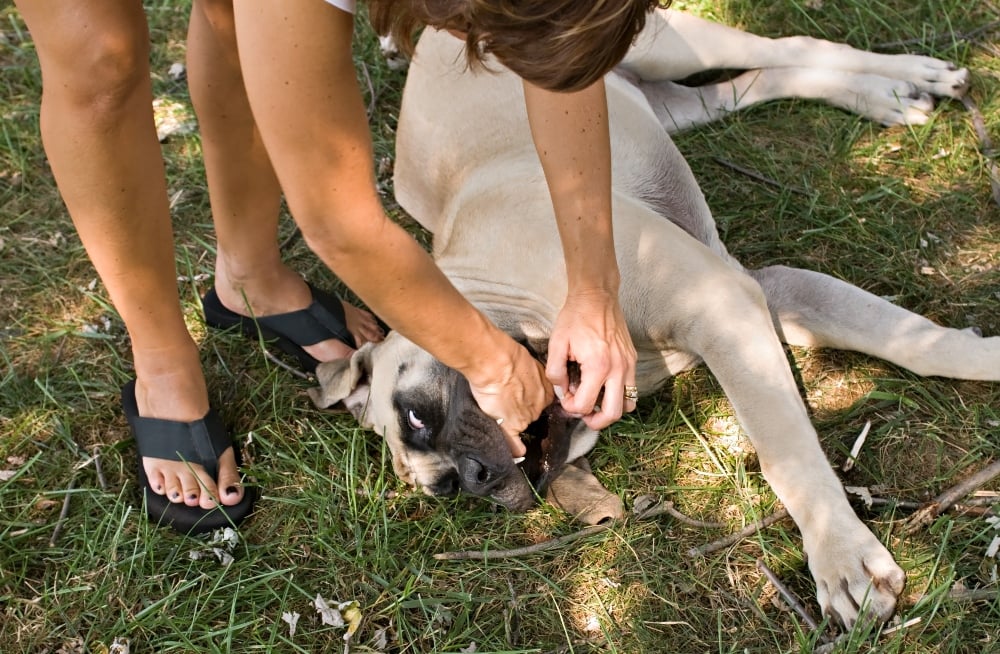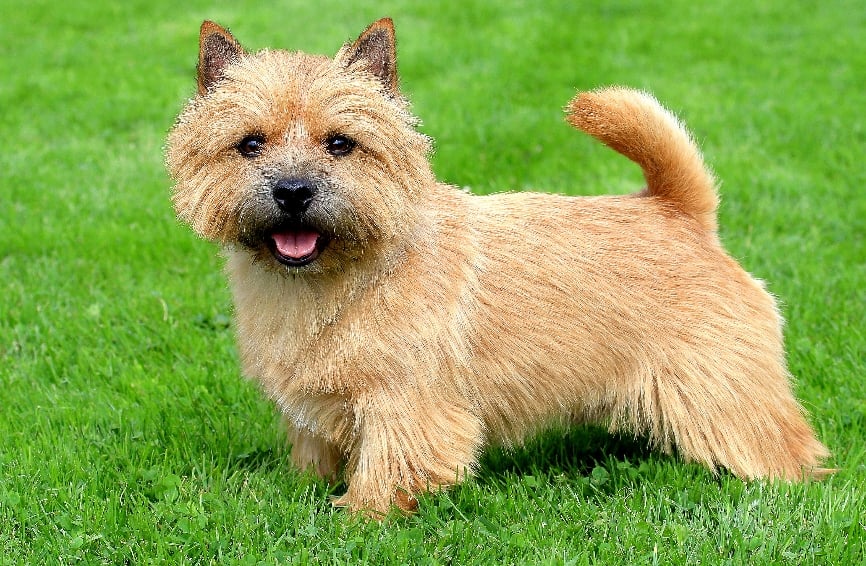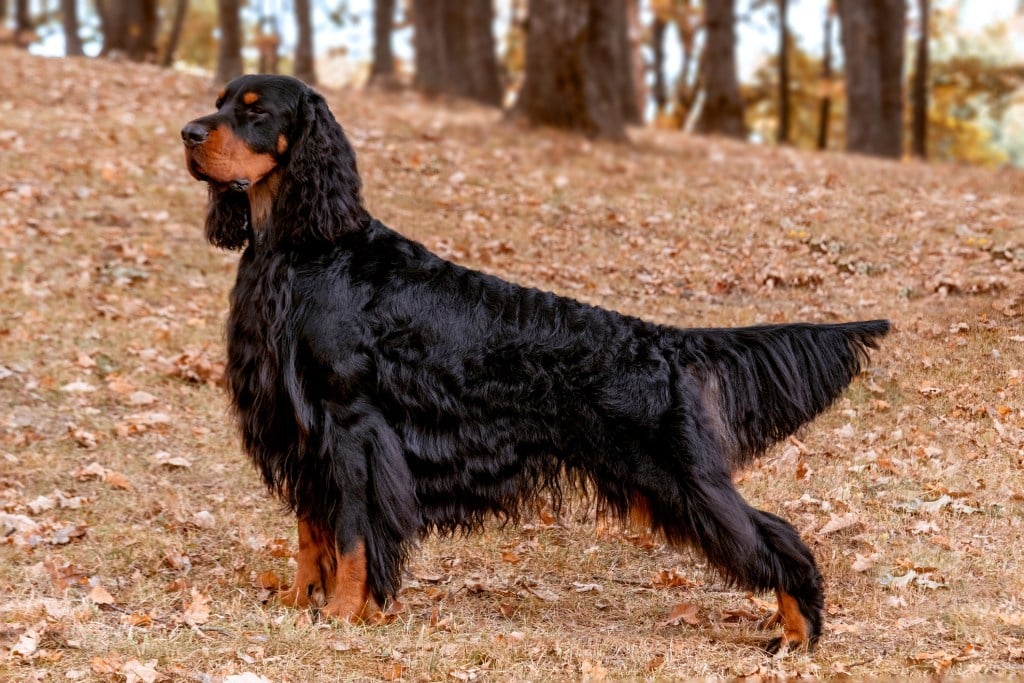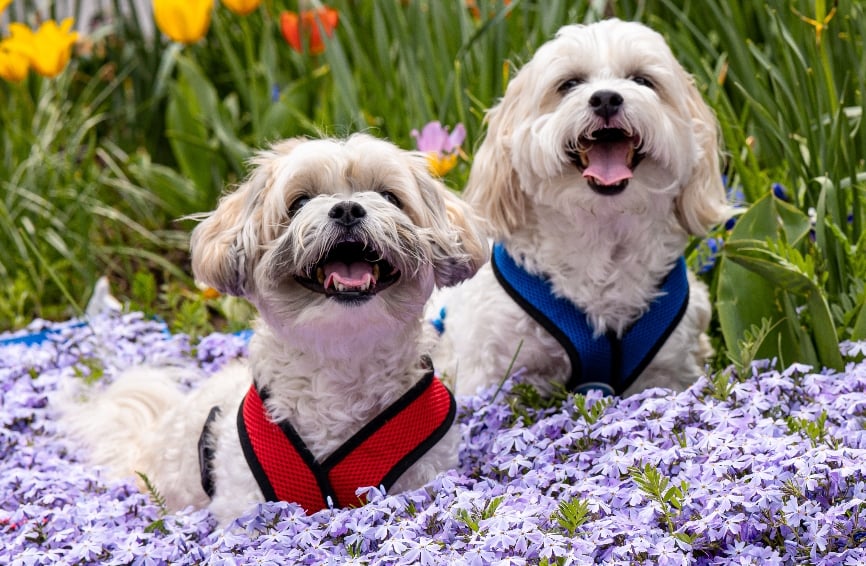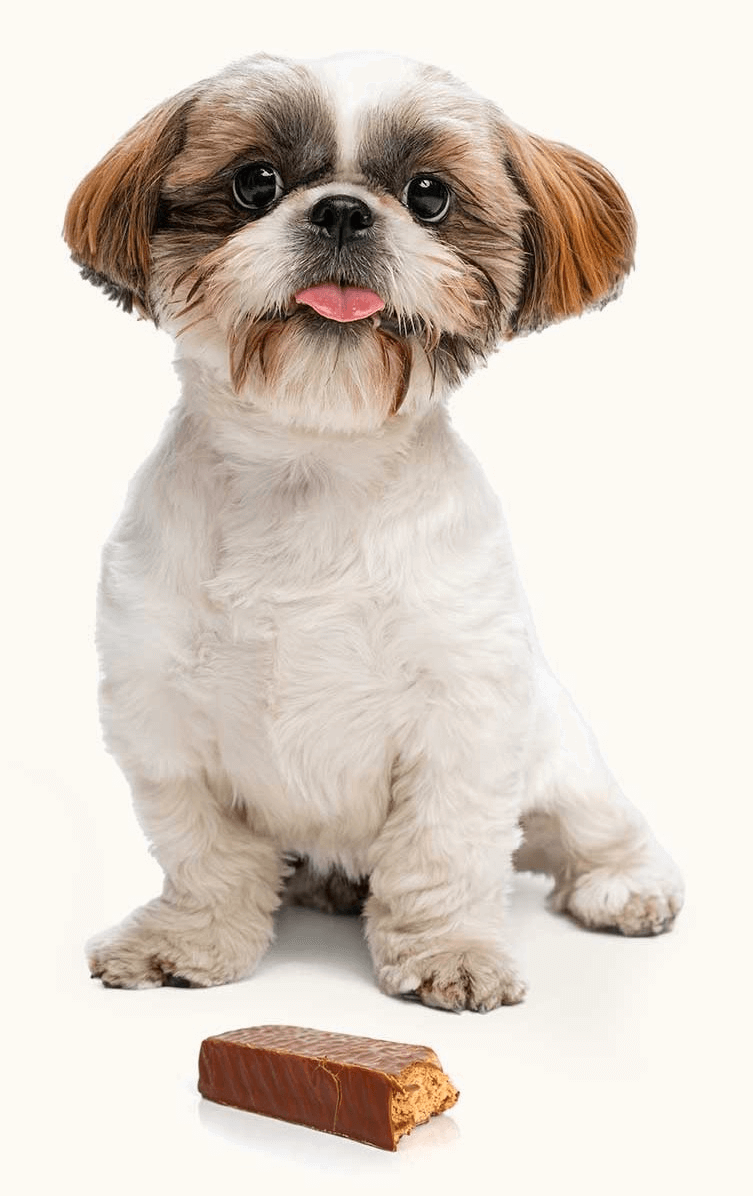Table of Contents
If you have ever choked on something or helped someone who was choking, you know that choking is a scary experience.
Unfortunately, dogs are not spared from choking. Their inquisitive nature and willingness to put just about anything in their mouths make choking relatively common in our beloved canines.
Choking in dogs is an emergency, so it’s essential to learn about it before your dog urgently needs your help. We’re here to help you recognize the signs of choking in dogs, what to do if your dog is choking, and how to prevent choking.
What is Choking?
Choking is a partial or total blockage of the airways. If the choking is not resolved quickly, a dog will become unconscious because it cannot breathe and get oxygen to its brain.
Dogs can choke on many things, including the items listed below:
- Bones
- Toy balls
- Rawhides
- Small toys or small components of toys
- Food (if eaten too quickly or the morsels are too big)
What Does Choking Look Like in Dogs?
Unlike people, dogs can’t point to their throats to indicate choking. Here are some signs of choking in dogs:
- Drooling
- Coughing
- Retching/gagging
- Struggling to whine
- Pawing at the mouth
- Rubbing the face on the floor
If a dog’s airway is completely blocked, the dog will be unable to make a sound and may be unconscious.
What To Do If Your Dog Is Choking
Choking can be life-threatening, so you must act quickly if your dog is choking. But don’t panic. If you panic, your dog will sense your anxiety and become more anxious, worsening the situation.
Remember to keep yourself safe. A dog that is choking is in distress and may bite when its mouth is opened. If you are worried about your dog biting you, call your veterinarian’s office or an emergency vet hospital for guidance on safely helping your dog during a choking emergency.
Here’s what to do if your dog is choking:
1. Gently restrain your dog.
Gentle restraint—without a muzzle– will keep your dog still enough for you to try to dislodge the object. If someone is there with you, they can gently restrain your dog.
2. Locate the object.
You may be able to see the object in your dog’s mouth or throat, depending on its size and shape. Open your dog’s mouth and wrap their lips over the teeth to protect your fingers (the person assisting you can do this). Make sure to check the roof of your dog’s mouth.
If you don’t see the object, don’t reach back into your dog’s throat to search for it. Doing so may damage the delicate tissues lining the throat.
3. Remove the object, if possible.
An object that is small, easily visible, and reachable can be removed by sweeping it out with your fingers or grabbing it with a pair of tweezers. Rawhide or bone, depending on the size of the fragment, might be able to be removed with tweezers.
Removing a large and visible object, like a ball or toy, will require a different technique. Place both thumbs under your dog’s jaw at the base of the throat and firmly press upward to dislodge the object just enough to remove it.
Avoid pushing the object to remove it. That may push the object further down the throat, worsening the choking.
4. Perform the Heimlich maneuver.
Yes, the Heimlich maneuver can be performed in dogs! It is used to force enough air out of the lungs to push the object up and out. It is indicated if you cannot remove the object using the previous steps.
The Heimlich maneuver is performed differently according to whether a dog is large or small.
Small dog
- Pick up your dog with their back to your stomach.
- Place the fist of one hand in the hollow spot in your dog’s abdomen, just under the ribs.
- Gently thrust upward and toward the head.
Large dog
You can use either method described below to perform the Heimlich maneuver in a large dog.
Method 1 (resembles performing the Heimlich on a person)
- Position your dog upright with their hind legs on the floor and their back against your stomach (like a person standing up).
- Place the fist of one hand in the abdomen’s soft spot and thrust inward and upward.
Method 2
- Lay your dog on their side, again with their back against your stomach.
- Place the fist of one hand in the abdomen’s soft spot.
- Thrust upward and inward toward your dog’s back.
Once the object is dislodged, lay your dog on their side and remove the object with your hand, taking care to avoid being bitten.
5. Perform CPR.
If your dog is not breathing after the object has been removed, perform cardiopulmonary resuscitation (CPR) to restore breathing. CPR in dogs consists of chest compressions (120 compressions/minute) and rescue breaths. The ideal compression-to-breathing ratio for CPR in a dog is 30 chest compressions to 2 breaths.
The Red Cross provides detailed instructions on performing CPR on a dog.
If you have someone with you, have them drive while you perform CPR in the car on the way to your veterinarian’s office.
6. Take your dog to your veterinarian.
Even if you removed the object and restored your dog’s breathing (if your dog had stopped breathing), your dog will still need to be examined. Your veterinarian will examine your dog for any potential injuries, such as rib injuries as a result of performing CPR or damage to the tissues of the throat.
Your veterinarian will determine the best treatment plan to get your dog feeling more comfortable after choking. For example, your dog may need pain medications for a rib injury. Eating soft foods will likely be needed until your dog’s throat heals.
How To Prevent Choking in Dogs
After a harrowing experience of your dog choking, you won’t want it to happen ever again. Here are some tips for preventing choking in dogs:
- Do not give your dog rawhides or bones.
- Keep children’s toys out of reach of your dog.
- Give your dog toys that do not have small parts that can be removed.
- If your dog chews toys aggressively, purchase only durable chew toys.
- Monitor your dog during playtime and closely watch which toys they play with.
- Make sure your dog’s kibble size is appropriate for your dog’s size. Also, consider a raised food bowl to slow your dog’s eating.
Choking in dogs occurs frequently and is distressing for dogs and their owners. Do your best to prevent your dog from choking. However, if your dog chokes on something, act quickly and follow the steps above to provide life-saving help for your dog.
